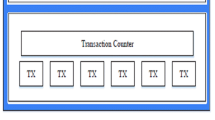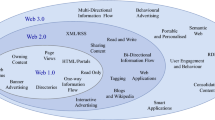Abstract
In recent years, blockchain security issues have attracted widespread attention. Especially in terms of computing power security, when nodes have sufficient computing power, they can arbitrarily tamper with blockchain ledger data. As a huge collection of computing power, the blockchain mining pool is a potential malicious node. Multiple malicious nodes jointly conduct a double-spending attack on the blockchain, which brings great security risks to the blockchain. This paper studies the different combinations of double-spending attack by potential malicious mining pools, constructs a blacklist judgment strategy based on the attack characteristics, and proposes a blockchain-based multi-malicious double-spending attack blacklist management model. Firstly, an inner loop malicious game is proposed to analyze the competition trend between a single malicious node and other malicious nodes. Secondly, according to the attack mode of multiple mining pools, a joint attack model and a decentralized attack model are proposed, and the operation rules of the two attack models are mathematically derived. Then a blacklist management model is proposed, and after the blacklist is constructed, a blacklist judgment strategy is formulated. The blacklist uses decentralize mining pool judgments and joint mining pool judgments to extract malicious mining pool nodes, which stops further malicious behavior. And finally, simulation experiments show that the blacklist management model can significantly reduce the success of attacks and resist double-spending attacks effectively.
















Similar content being viewed by others
Data availability
A significant amount of data is presented in this article. The remaining data that support the findings of this study are available on request from the corresponding author. The data are not publicly available due to privacy or ethical restrictions.
References
Nakamoto S (2008) Bitcoin: a peer-to-peer electronic cash system. Decent Bus Rev:21260
Yaga D, Mell P, Roby N, Scarfone K (2019) Blockchain technology overview. arXiv preprint arXiv:1906.11078
Yli-Huumo J, Ko D, Choi S, ParkS Smolander K (2016) Where is current research on blockchain technology?-a systematic review. PloS One 11(10):e0163477
Zheng Z, Xie S, Dai H, Chen X, Wang H (2017) An overview of blockchain technology: architecture, consensus, and future trends. In: 2017 IEEE International Congress on Big Data (BigData Congress), pp 557–564, IEEE
Belchior R, Vasconcelos A, Guerreiro S, Correia M (2020) A survey on blockchain interoperability: past, present, and future trends. arXiv preprint arXiv:2005.14282
Yang W, Garg S, Raza A, Herbert D, Kang B (2018, August) Blockchain: trends and future. In: Pacific Rim Knowledge Acquisition Workshop, Springer, Cham, pp 201–210
Giungato P, Rana R, Tarabella A, Tricase C (2017) Current trends in sustainability of bitcoins and related blockchain technology. Sustainability 9(12):2214
Nguyen GT, Kim K (2018) A survey about consensus algorithms used in blockchain. J Inf Process Syst 14(1):101–128
Mingxiao D, Xiaofeng M, Zhe Z, Xiangwei W, Qijun C (2017) A review on consensus algorithm of blockchain. In: 2017 IEEE International Conference on Systems, Man, and Cybernetics (SMC), IEEE, pp 2567–2572
He Y, Li H, Cheng X, Liu Y, Yang C, Sun L (2018) A blockchain based truthful incentive mechanism for distributed P2P applications. IEEE Access 6:27324–27335
Donet J A D, Pérez-Sola C, Herrera-Joancomartí J (2014) The bitcoin P2P network. In: International Conference on Financial Cryptography and Data Security, Springer, Berlin, Heidelberg, pp 87–102
Ben Mariem S, Casas P, Donnet B (2018) Vivisecting blockchain P2P networks: unveiling the Bitcoin IP network. In: ACM CoNEXT student workshop
Benisi NZ, Aminian M, Javadi B (2020) Blockchain-based decentralized storage networks: a survey. J Netw Comput Appl 162:102656
Puthal D, Malik N, Mohanty SP, Kougianos E, Yang C (2018) The blockchain as a decentralized security framework [future directions]. IEEE Consum Electron Mag 7(2):18–21
Gencer AE, Basu S, Eyal I, Van Renesse R, Sirer EG (2018) Decentralization in bitcoin and ethereum networks. In: International Conference on Financial Cryptography and Data Security, Springer, Berlin, Heidelberg, pp 439–457
Nugent T, Upton D, Cimpoesu M (2016) Improving data transparency in clinical trials using blockchain smart contracts. F1000Research 5
Bhowmik D, Feng T (2017) The multimedia blockchain: a distributed and tamper-proof media transaction framework. In: 2017 22nd International Conference on Digital Signal Processing (DSP), IEEE, pp 1–5
Xinyi Y, Yi Z, He Y (2018) Technical characteristics and model of blockchain. In: 2018 10th International Conference on Communication Software and Networks (ICCSN), IEEE, pp 562–566
Viriyasitavat W, Hoonsopon D (2019) Blockchain characteristics and consensus in modern business processes. J Ind Inf Integr 13:32–39
Leng K, Bi Y, Jing L, Fu HC, Van Nieuwenhuyse I (2018) Research on agricultural supply chain system with double chain architecture based on blockchain technology. Fut Gener Comput Syst 86:641–649
Liu X (2018) Research and application of electronic invoice based on blockchain. In: MATEC Web of Conferences , Vol. 232, EDP Sciences, p 04012
Feng Q, He D, Zeadally S, Khan MK, Kumar N (2019) A survey on privacy protection in blockchain system. J Netw Comput Appl 126:45–58
Lin IC, Liao TC (2017) A survey of blockchain security issues and challenges. Int J Netw Secur 19(5):653–659
Kumar NM, Mallick PK (2018) Blockchain technology for security issues and challenges in IoT. Proced Comput Sci 132:1815–1823
Dai F, Shi Y, Meng N, Wei L, Ye Z (2017) From bitcoin to cybersecurity: a comparative study of blockchain application and security issues. In: 2017 4th International Conference on Systems and Informatics (ICSAI), IEEE, pp 975–979
Matzutt R, Hiller J, Henze M, Ziegeldorf J H, Müllmann D, Hohlfeld O, Wehrle K (2018) A quantitative analysis of the impact of arbitrary blockchain content on bitcoin. In: International Conference on Financial Cryptography and Data Security, Springer, Berlin, Heidelberg, pp 420–438
DuPont Q (2017) Experiments in algorithmic governance: a history and ethnography of “The DAO,” a failed decentralized autonomous organization. Bitcoin Beyond:157–177
bradbury D (2013) Czech bitcoin exchange Bitcash.cz hacked and up to 4,000 user wallets emptied. Coindesk. https://www.coindesk.com/czech-bitcoin-exchange-bitcash-cz-hacked-4000-user-wallets-emptied
Shane D (2018) $530 million cryptocurrency heist may be biggest ever. CNNMoney. https://money.cnn.com/2018/01/29/technology/coincheck-cryptocurrency-exchange-hack-japan/index.html
Wood A (2018) Confirmed: monex group to acquire coincheck. Cointelegraph. https://cointelegraph.com/news/confirmed-monex-group-to-acquire-coincheck
Whittaker Z (2015) Bitstamp exchange hacked, $5M worth of bitcoin stolen. zdnet. https://www.zdnet.com/article/bitstamp-bitcoin-exchange-suspended-amid-hack-concerns-heres-what-we-know/
Karame G, Androulaki E, Capkun S (2012) Two bitcoins at the price of one? Double-spending attacks on fast payments in bitcoin. IACR Cryptol ePrint Arch 248:1–17
Karame GO, Androulaki E, Capkun S (2012) Double-spending fast payments in bitcoin. In: Proceedings of the 2012 ACM Conference on Computer and Communications Security, pp 906–917
Chaudhary KC, Chand V, Fehnker A (2020) Double-spending analysis of bitcoin. In Pacific Asia Conference on Information Systems Proceedings. Association for Information Systems
Gervais A, Karame G O, Wüst K, Glykantzis V, Ritzdorf H, Capkun S (2016) On the security and performance of proof of work blockchains. In: Proceedings of the 2016 ACM SIGSAC Conference on Computer and Communications Security, pp 3–16
Meneghetti A, Sala M, Taufer D (2020) A survey on pow-based consensus. Ann Emerg Technol Comput (AETiC) Print ISSN, 2516-0281
She W, Liu Q, Tian Z, Chen JS, Wang B, Liu W (2019) Blockchain trust model for malicious node detection in wireless sensor networks. IEEE Access 7:38947–38956
Huang J, Kong L, Chen G, Wu MY, Liu X, Zeng P (2019) Towards secure industrial IoT: blockchain system with credit-based consensus mechanism. IEEE Trans Ind Inf 15(6):3680–3689
Gong S, Lee C (2020) Blocis: blockchain-based cyber threat intelligence sharing framework for sybil-resistance. Electronics 9(3):521
Tukur YM, Thakker D, Awan IU (2021) Edge-based blockchain enabled anomaly detection for insider attack prevention in Internet of Things. Trans Emerg Telecommun Technol 32(6):e4158
Shafi Q, Basit A (2019) DDoS botnet prevention using blockchain in software defined internet of things. In: 2019 16th International Bhurban Conference on Applied Sciences and Technology (IBCAST), IEEE, pp 624–628
Qiang Liu, Song Yan, Jie Wan (2021) Ruiqiang Ma. Multi-malicious nodes double-spending attack blacklist management model. DSIT, Jianhang Xu, pp 462–467
Lewenberg Y, Bachrach Y, Sompolinsky Y, Zohar A, Rosenschein J S (2015) Bitcoin mining pools: a cooperative game theoretic analysis. In: Proceedings of the 2015 International Conference on Autonomous Agents and Multiagent Systems, pp 919–927
Fisch B, Pass R, Shelat A (2017) Socially optimal mining pools. In: International Conference on Web and Internet Economics, Springer, Cham, pp 205–218
Daniel C (2014) Are 51% Attacks a Real Threat to Bitcoin? CoinDesk. https://www.coindesk.com/51-attacks-real-threat-bitcoin
Lylian T (2019) BTC.COM’S BITCOIN MINING POOL DOMINANCE THREATENED BY POOLIN. 8btc. https://bitcoinmagazine.com/business/btc-coms-bitcoin-mining-pool-dominance-threatened-by-poolin
Ji S, Ma H, Liang Y, Leung H, Zhang C (2017) A whitelist and blacklist-based co-evolutionary strategy for defensing against multifarious trust attacks. Appl Intell 47(4):1115–1131
Dony C, Raskinet M, Renaville F, Simon S, Thirion P (2020) How reliable and useful is Cabell’s Blacklist? A data-driven analysis. Liber Q. 30(1)
Lee H, Shin M, Kim K S, Kang Y, Kim J (2018) Recipient-oriented transaction for preventing double spending attacks in private blockchain. In: 2018 15th Annual IEEE International Conference on Sensing, Communication, and Networking (SECON), IEEE, pp 1–2
Pérez-Solà C, Delgado-Segura S, Navarro-Arribas G, Herrera-Joancomartí J (2019) Double-spending prevention for bitcoin zero-confirmation transactions. Int J Inf Secur 18(4):451–463
Zhang S, Lee JH (2020) Mitigations on sybil-based double-spend attacks in bitcoin. IEEE Consum Electron Mag 10(5):23–28
Ekparinya P, Gramoli V, Jourjon G (2018) Double-spending risk quantification in private, consortium and public ethereum blockchains. CoRR abs/1805.05004
Kovalchuk L, Kaidalov D, Nastenko A, Rodinko M, Shevtsov O, Oliynykov R (2020) Decreasing security threshold against double spend attack in networks with slow synchronization. Comput Commun 154:75–81
Fujita K, Zhang Y, Sasabe M, Kasahara S (2021) Mining pool selection under block with holding attack. Appl Sci 11(4):1617
Yang T, Xue Z (2019) Game theory among mining pools in blockchain system. Commun Technol 52(05):1189–1195
Wang C, Chu X, Qin Y (2020, July) Measurement and analysis of the bitcoin networks: a view from mining pools. In: 2020 6th International Conference on Big Data Computing and Communications (BIGCOM), pp 180–188, IEEE
Romiti M, Judmayer A, Zamyatin A, Haslhofer B (2019) A deep dive into bitcoin mining pools: an empirical analysis of mining shares. arXiv preprint arXiv:1905.05999
Sagirlar G, Carminati B, Ferrari E, Sheehan J D, Ragnoli E (2018) Hybrid-iot: hybrid blockchain architecture for internet of things-pow sub-blockchains. In: 2018 IEEE International Conference on Internet of Things (iThings) and IEEE Green Computing and Communications (GreenCom) and IEEE Cyber, Physical and Social Computing (CPSCom) and IEEE Smart Data (SmartData), IEEE, pp 1007–1016
Shi L, Wang T, Li J, Zhang S (2021) Pooling is not favorable: decentralize mining power of PoW blockchain using age-of-work. arXiv preprint arXiv:2104.01918
Saad M, Njilla L, Kamhoua C, Kim J, Nyang D, Mohaisen A (2019) Mempool optimization for defending against ddos attacks in pow-based blockchain systems. In: 2019 IEEE International Conference on Blockchain and Cryptocurrency (ICBC), IEEE, pp 285–292
He S, Ren W, Zhu T, Choo KKR (2019) BoSMoS: a blockchain-based status monitoring system for defending against unauthorized software updating in industrial Internet of Things. IEEE Internet of Things J 7(2):948–959
Wang K, Wang Y, Ji Z (2020) Defending blockchain forking attack by delaying MTC confirmation. IEEE Access 8:113847–113859
Acknowledgements
The authors thank for prof. Linlin Ding and Dr Wanting Ji for helpful discussions.
Funding
This work was supported by the National Natural Science Foundation of China (61502215, 51704138), the Postdoctoral Science Foundation of China (2020M672134) and the Scientific Research Project of the Educational Department of Liaoning Province (LJC201913).
Author information
Authors and Affiliations
Corresponding author
Ethics declarations
Conflict of interest
The authors declare no potential conflict of interests.
Additional information
Publisher's Note
Springer Nature remains neutral with regard to jurisdictional claims in published maps and institutional affiliations.
Rights and permissions
About this article
Cite this article
Wang, J., Liu, Q. & Song, B. Blockchain-based multi-malicious double-spending attack blacklist management model. J Supercomput 78, 14726–14755 (2022). https://doi.org/10.1007/s11227-022-04370-1
Accepted:
Published:
Issue Date:
DOI: https://doi.org/10.1007/s11227-022-04370-1




